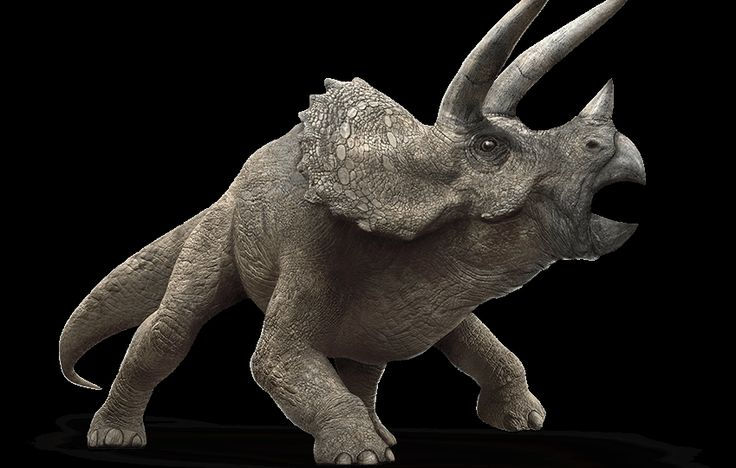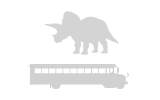
CREATURE-PEDIA
Fun Fact
Triceratops might of behaved and charge like a Rhino.
Triceratops




Triceratops (meaning “Three Horned Face”), is a herbivorous ceratopsid dinosaur that first appeared during the late Maastrichtian stage of the late Cretaceous period, about 68 million years ago in what is now North America. Triceratops was about 3 meters (10 feet) tall, 10 meters (33 feet) long, weighed as much as 12 tonnes, and had a skull up to 3 meters in length making it one of the biggest, if not, the biggest of the ceratopsians. A fully grown Triceratops was far from defenseless. Its frill was made of solid bone and sheathed in keratin, but whether it would stand and fight cannot be known. When they fed, these animals weren't like cows because they didn't graze. They were thought to be browsers, they had shearing teeth to slice through vegetation. They fed on low shrubs. Unlike most of its relatives, Triceratops lacked the two holes that are covered with skin on its bony frill, allowing it to use it as a shield to its neck as well as using it for display. The front end of its jaws ended in a sort of a beak that enabled the dinosaur to browse the fronds and twigs of the woody plants that were contemporary to the end of the Cretaceous. Its limbs were thick and the hind legs were somewhat longer than the fore, which had a digitigrade posture, the weight was distributed to its toes, rather than the whole foot. Despite classically being depicted charging at predators, modern studies indicate that this wouldn't be possible, it would shatter the front half of its skull, including its large nose. Bearing a large bony frill and three horns on its large four-legged body, and possessing similarities with the modern rhinoceros, Triceratops is one of the most recognizable of all dinosaurs and the best known ceratopsid.The large frill also may have helped to increase body area to regulate body temperature. A similar theory has been proposed regarding the plates of Stegosaurus, although this use alone would not account for the bizarre and extravagant variation seen in different members of the Ceratopsidae. This observation is highly suggestive of what is now believed to be the primary function, display. Triceratops was featured in all Jurassic Park films including 2015's blockbuster Jurassic World.

